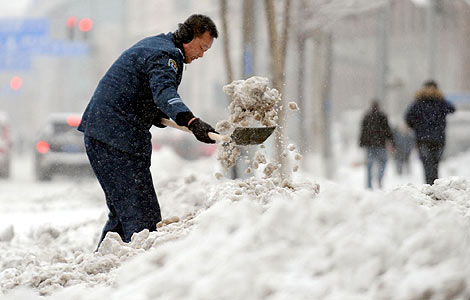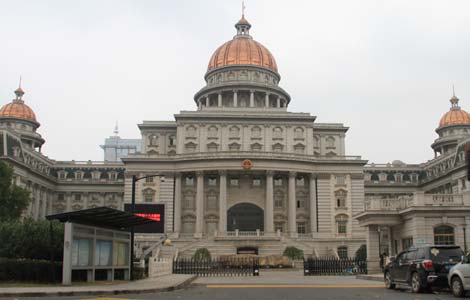
China's central bank on Thursday used money market methods it hasn't used in a decade to discharge liquidity, postponing the prospect of a further cut in the reserve requirement ratio.
The People's Bank of China bought 20 billion yuan ($3.17 billion) worth of securities from selected banks, with a promise to sell them back 28 days later and charging a rate of 3.6 percent, according to a statement on its website.
It's the first time the central bank has used 28-day reverse repos since December 2002.
Simultaneously, the central bank also auctioned 35 billion-yuan seven-day reverse repos at a rate of 3.35 percent.
"The extension of the tenor of reverse repos suggests policymakers are continuing to favor temporary measures over cutting the required reserve ratio, which would be a permanent solution," Dariusz Kowalczyk, a senior economist and strategist at Credit Agricole CIB, wrote in a research note e-mailed to China Daily
"It is possible that the reserve requirement ratio will not be cut anytime soon. This means that interbank liquidity will likely remain relatively tight."
The reverse repo rates are lower than current market levels. But the move failed to ease the interbank lending rate on Thursday, as the new operations are smaller than maturing ones, in effect subtracting liquidity.
Up to 165 billion yuan of former reverse repos mature this week. Subtracting mature central bank notes, repos and sales of new reserve repos, the week is set to see a net liquidity loss of 8 billion yuan.
On Thursday, most types of the Shanghai Interbank Offered Rate, the money market benchmark, increased. The overnight Shibor jumped 8.5 basis points to 2.6833 percent. The most actively traded seven-day Shibor edged up 0.04 basis points to 3.435 percent.
The one-month, three-month, six-month and nine-month Shibor increased. But 14 days and one year dropped slightly.
Mou Zhiyang, a fixed-asset researcher at Hualong Securities Co Ltd, said that the extended reserve repos came ahead of the expected cash reserve increase by lenders during the seven-day National Day holiday starting on Oct 1.
"It's in line with market expectations. The move alleviates central bank pressure to conduct massive 14-day reserve repos at month-end."
Chinese banks typically increase cash reserves by 1 percent during the National Day holiday, making available around 800 billion yuan, he added.
The market has been expecting a major fiscal and monetary stimulus after China's GDP growth hit a three-year low of 7.6 percent in the second quarter.
Kowalczyk said that the central bank's reluctance to cut the RRR indicates that monetary stimulus this time is much weaker than that in 2008 when China rolled out a 4 trillion yuan investment package that helped the country weather the global financial crisis relatively unscathed.
And that will make it difficult to fund large-scale infrastructure projects and makes any recovery gradual.
Equity market gains will be "tepid" under tight liquidity conditions, he added, dampening hopes that a recent uptick in the stock index will extend into a sustained rally.
The major Shanghai Composite Index dropped 0.76 percent, or 16.18 points, to 2110.38 points on Thursday. The Shanghai index jumped 3.7 percent on Sept 7, offering some relief for investors after previous slumps dragged the index close to the psychologically important 2000 points.
The index has fallen 4.05 percent so far this year. It dropped 1.2 percent over the past month.
Contact the writer at gaochangxin@chinadaily.com.cn







